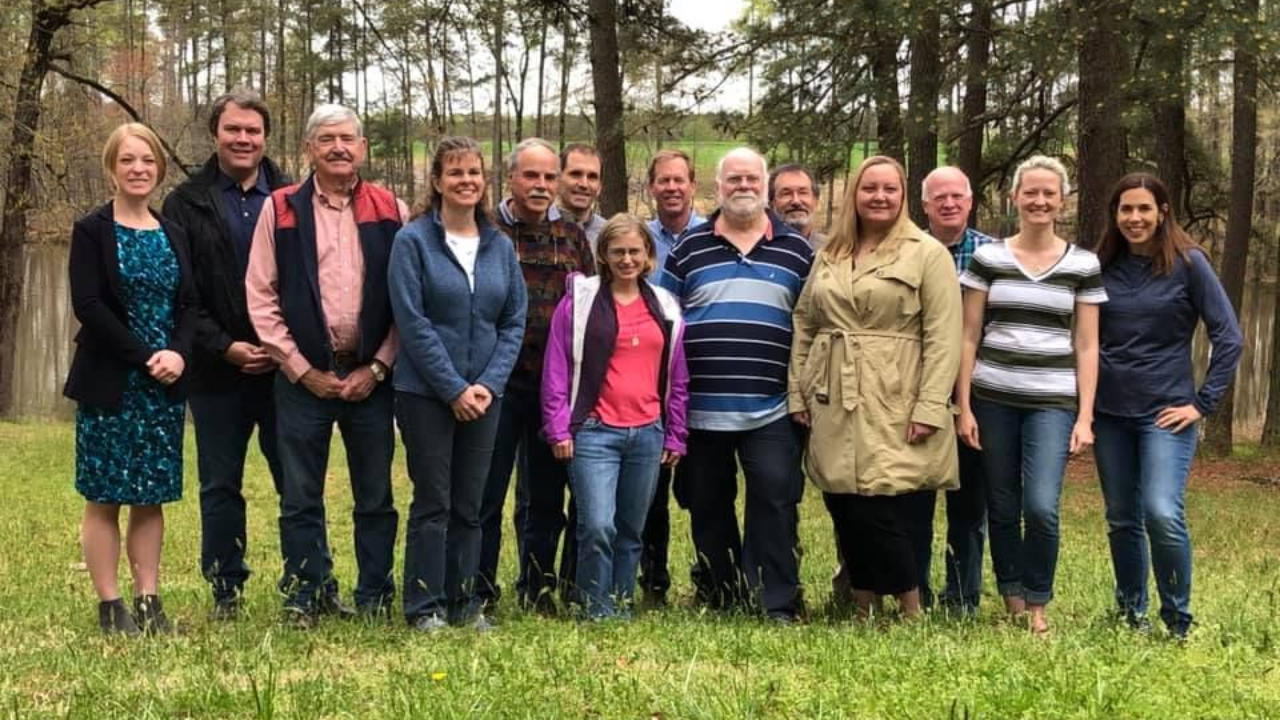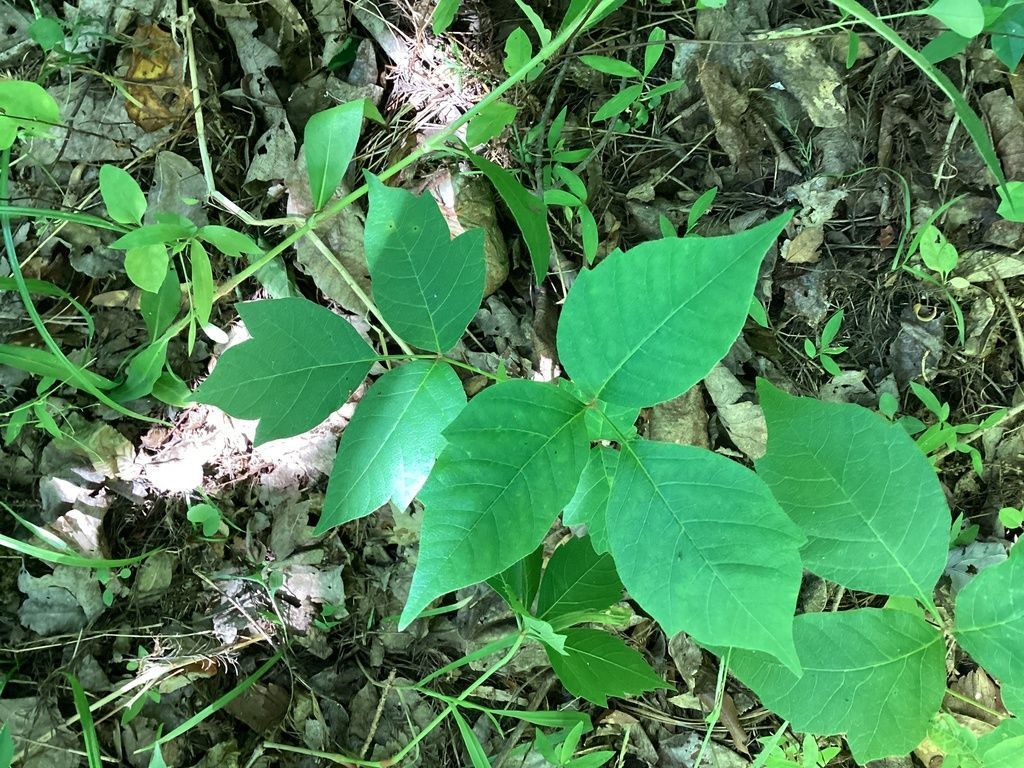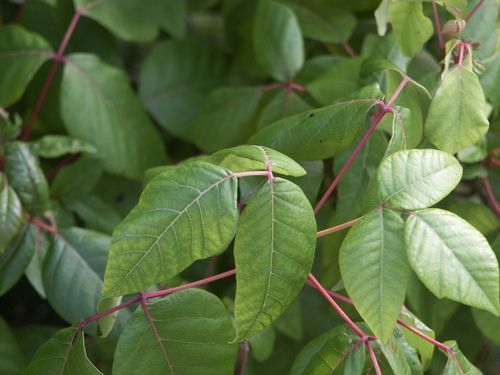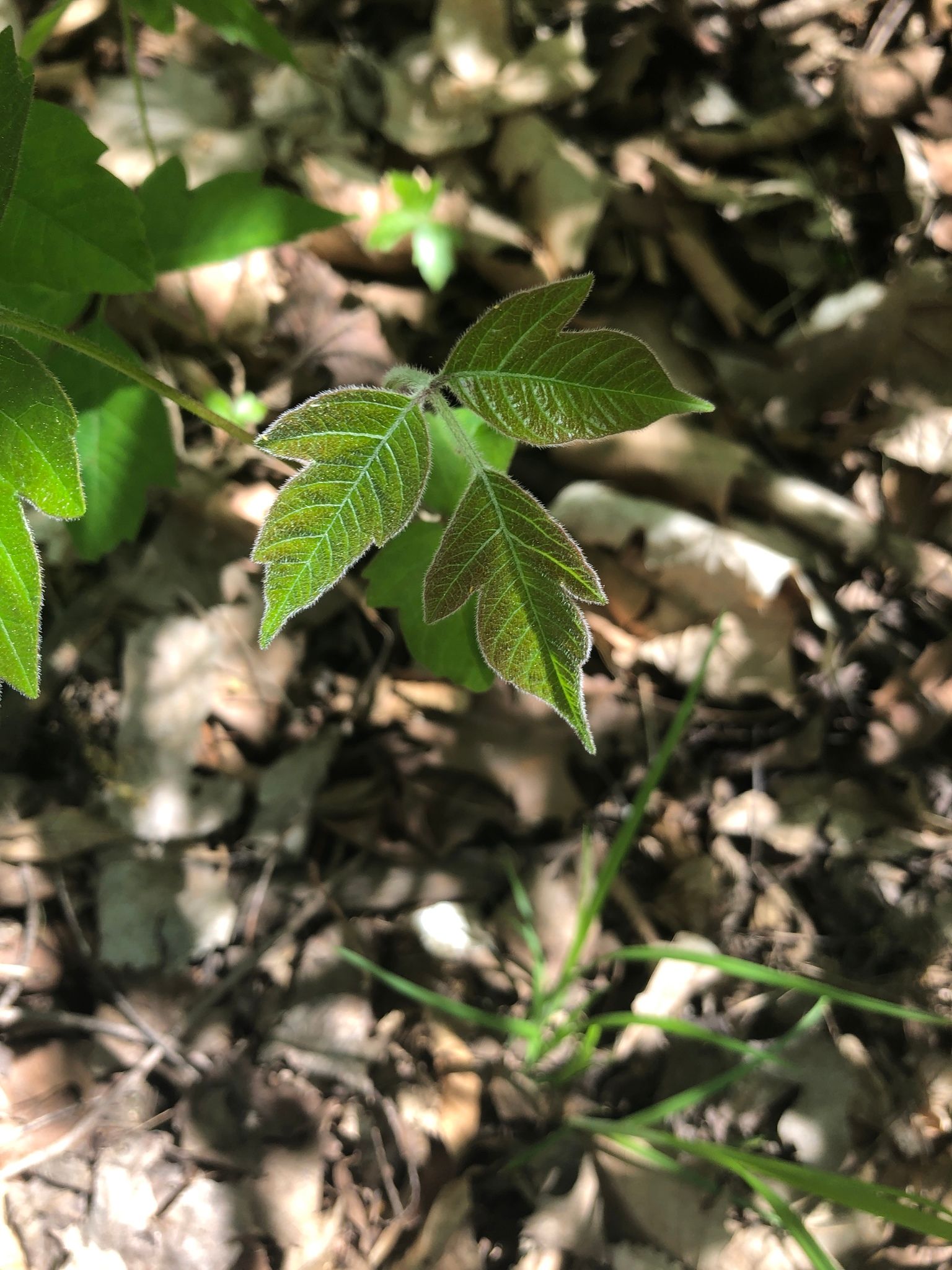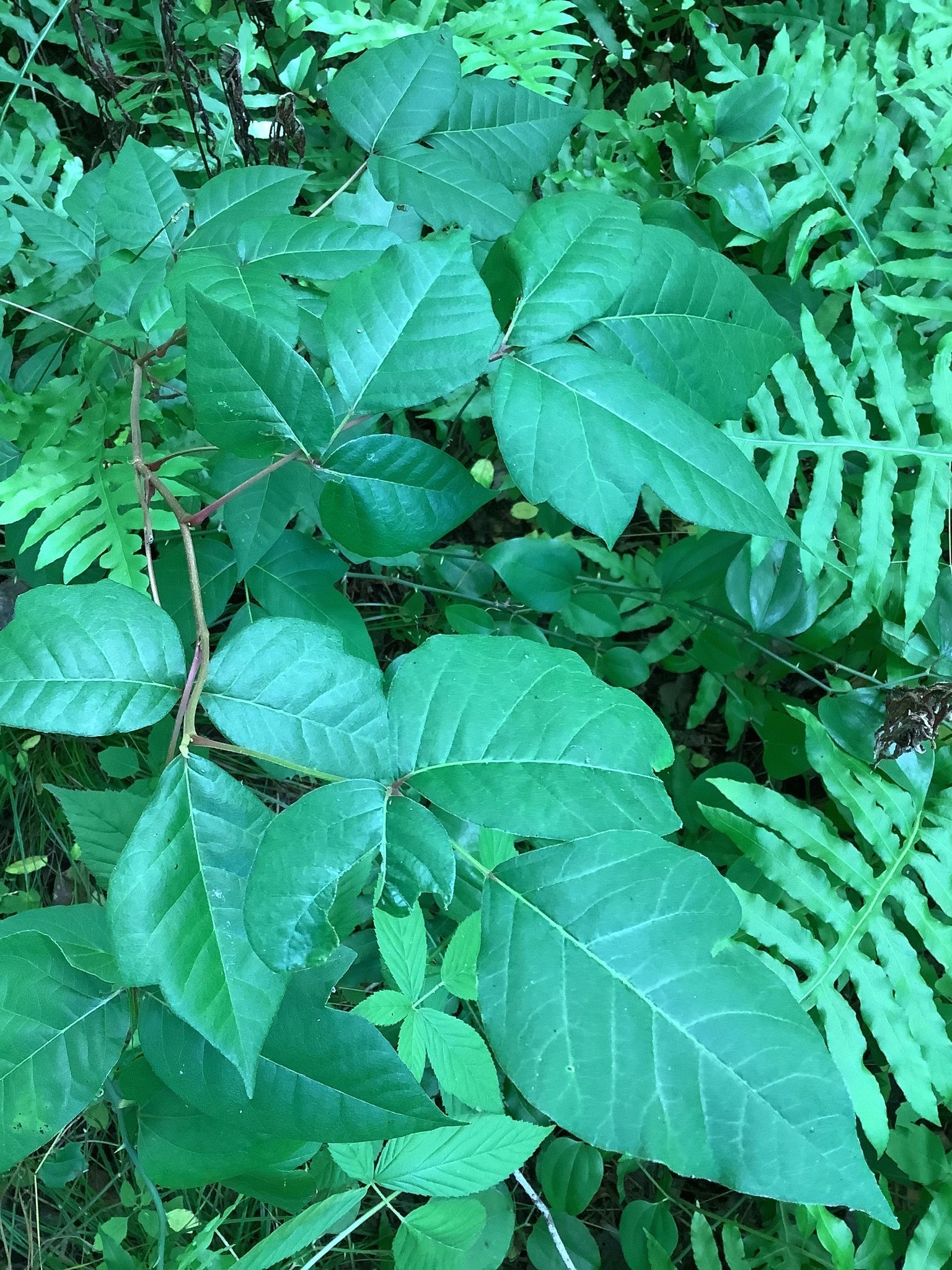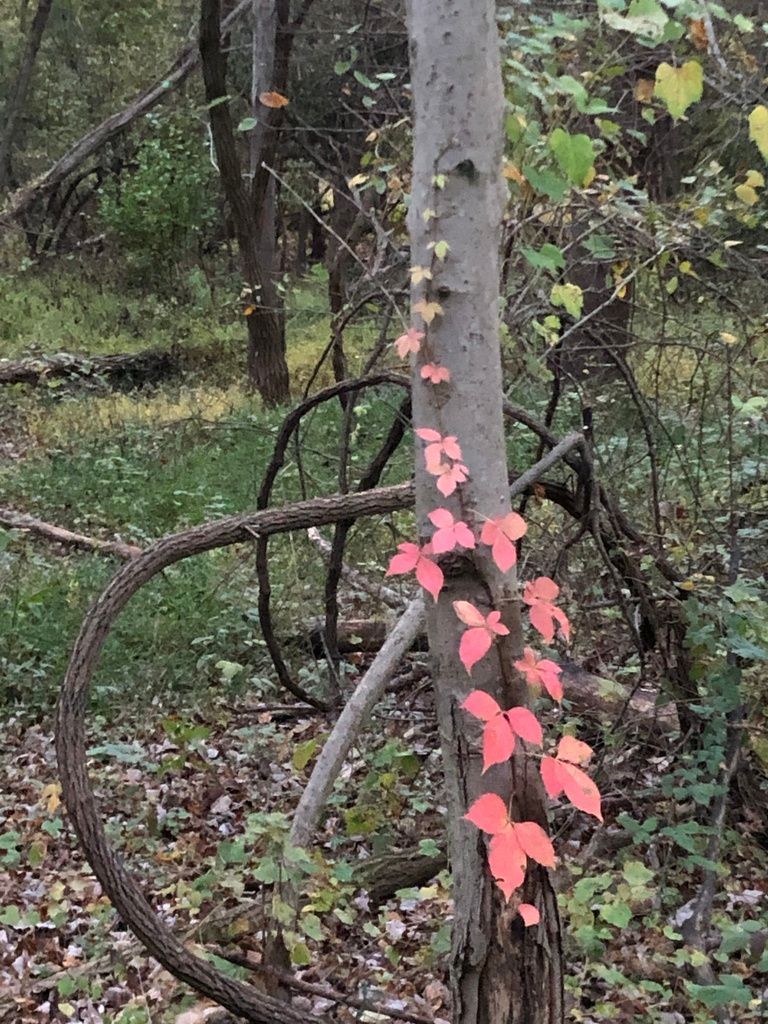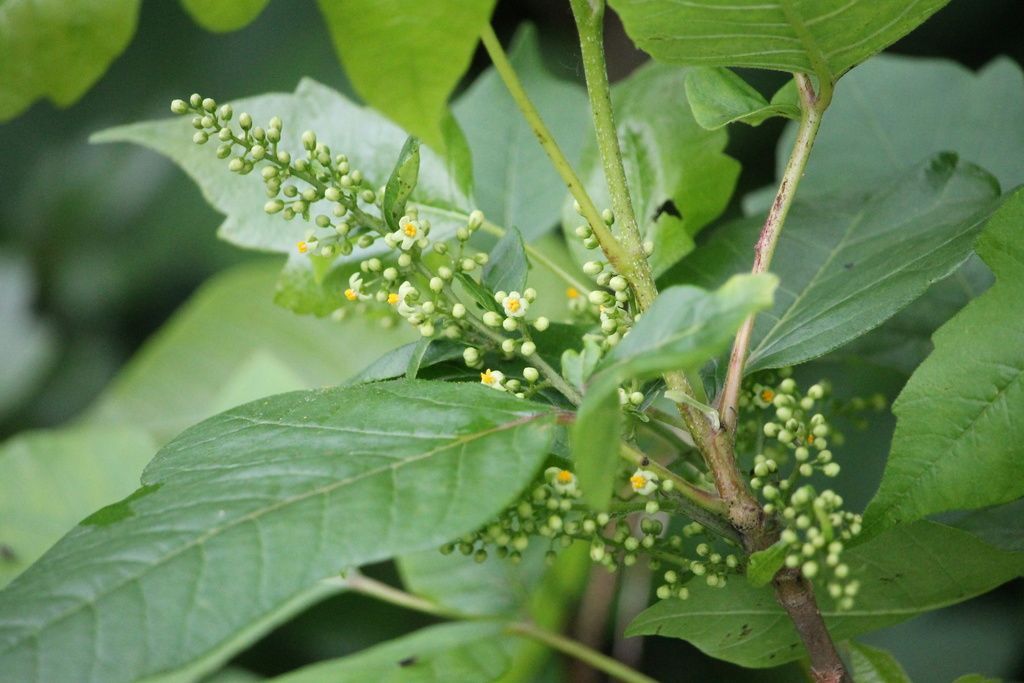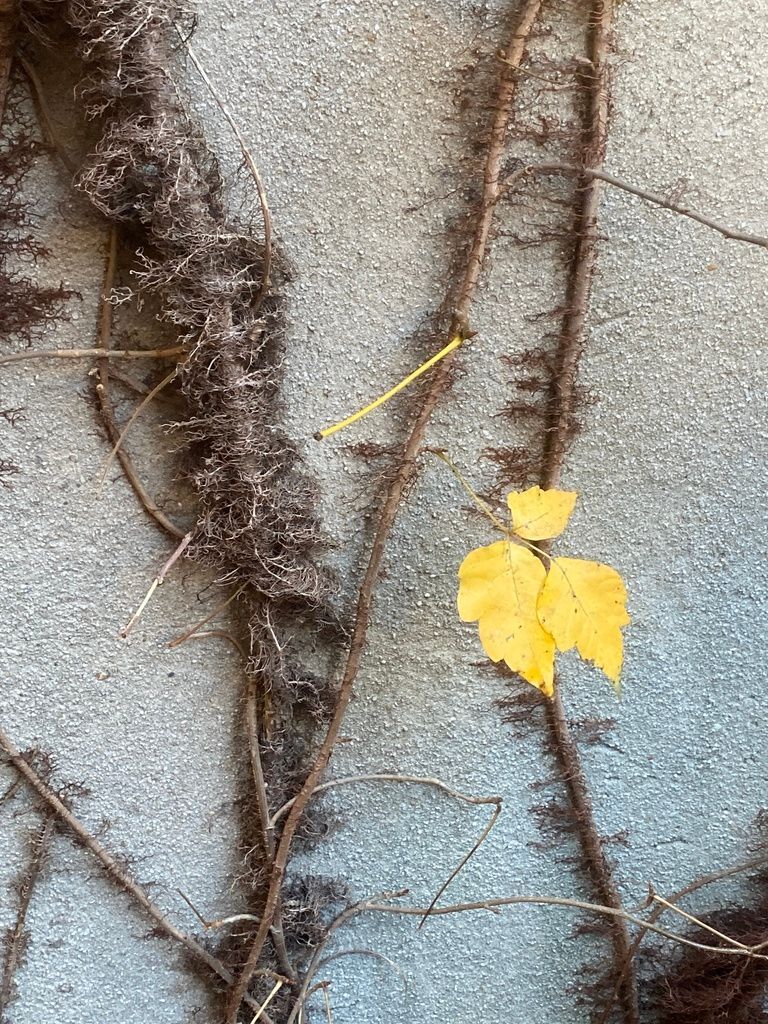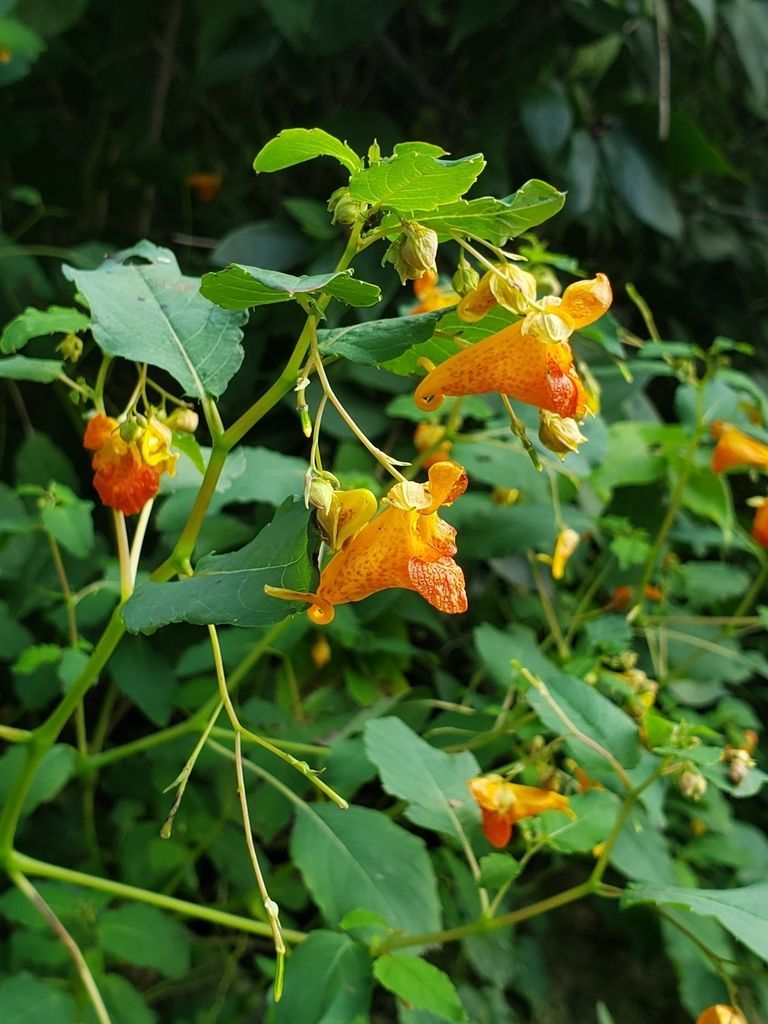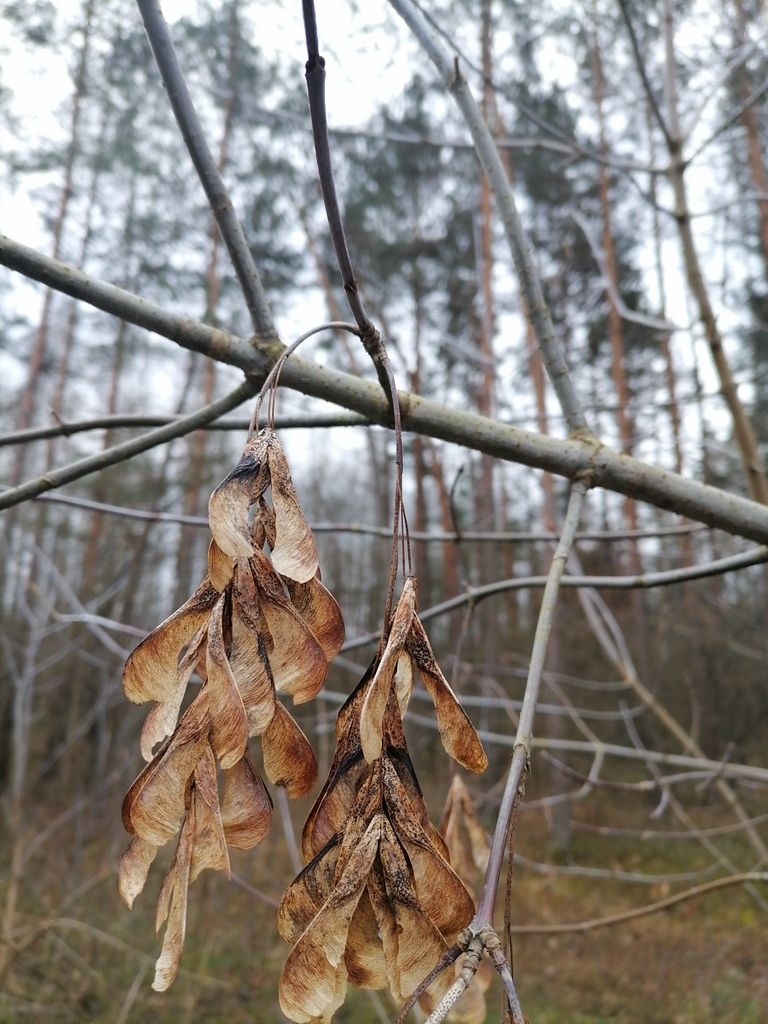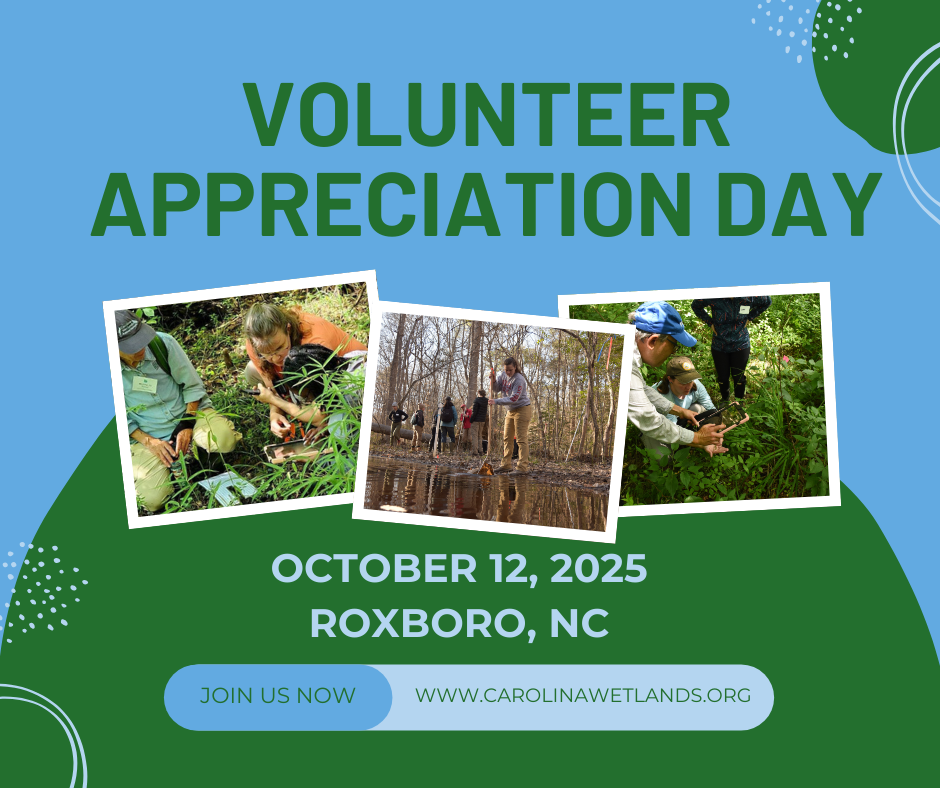Poison ivy is native to North Carolina. It will grow in floodplain wetlands and swamps, but also grows in drier upland areas. It grows especially well in areas that have been recently disturbed, such as by construction or roadways. It often grows alongside jewelweed (Impatiens capensis), which is another common wetland plant. Jewelweed is sometimes used as a homeopathic remedy for poison ivy that is said to prevent poison ivy reactions.
Plant of the Month: Poison ivy
Toxicodendron radicans AKA Poison ivy
One of the most common plants that we’ve found at our monitoring sites is one that’s useful to know wherever you are: Poison ivy (Toxicodendron radicans). Poison ivy can be hard to identify as it can look very dissimilar from plant to plant or even at different points of the same plant. It is helpful to remember the common cautionary sayings:
“Leaves of three, let it be!”
“If it’s a hairy rope, don’t be a dope!”
Toxicodendron means poison tree. You definitely don’t want to accidentally touch this plant as it gives off an oil called urushiol, which can cause itchiness and puss-filled bumps for many people. Ick! You can get the oils from the plant on your skin from any part of the plant, even in winter or if the plant is dead. Some people have more of a reaction than others to the urushiol, but a sensitivity can develop over time, so it’s best not to touch. If you develop a rash, it is not contagious, but the oils can stay on your clothes or pets for a long time, causing re-exposure to the oils.
The second part of the name, radicans, means rooting. This is useful to remember as the vine that poison ivy often grows on can become covered in tiny roots that help it cling to and climb trees. Thus, the vine has a hairy or fuzzy appearance.
The leaves of poison ivy are trifoliate, meaning you will always find 3 leaves together. The plant may have many branches, each with 3 leaves. Be careful to look at multiple parts of the plant as it is possible that damage to the plant may cause you to only see 2 leaves, but most of the plant should have groupings of 3 leaves and never more than 3 leaves. The leaves can vary significantly in shape and color. Leaves may appear green, reddish, shiny, or matte! They may appear as smooth (entire) almond shapes or may have significant toothing (lobing). Poison ivy can grow as ground cover, a bushy plant growing out of the ground, or a hairy vine growing up a tree. Poison ivy has white fruits in the fall and yellow flowers in the summer.
Poison ivy is not a true ivy, but it is in the same family as cashews and mangoes. If you develop a severe allergy to poison ivy, you may also be affected by these plants.
Poison ivy can be confused with a couple other common plants we might see:
Young box elders (Acer negundo) can also be confused for poison ivy. Box elder is a type of maple that can also have groups of 3 leaves. They grow in wet areas and although they become trees, they start out small and shrubby like poison ivy. It is helpful to look at how the leaves are arranged. Poison ivy has alternate branching, meaning that only one branch will come out of the main stem at any point. Box elders, like all maples, have opposite branching, meaning that 2 branches will depart from the main stem at any point along the stem. If the plant is damaged, there may be some points where you don’t see 2 branches, but if there is any point on the stem where 2 branches come out at the same point, it has opposite branching.
Poison ivy gets a bad reputation, but it has benefits! Its fruits provide food for many animals and its roots help hold soil and prevent erosion, especially in disturbed areas.
On your next hike, look out for poison ivy in its many forms, so that you’ll be prepared to identify it at our next monitoring events. If you are still unsure, you can practice using
iNaturalist on your phone to help you.
You might also like
